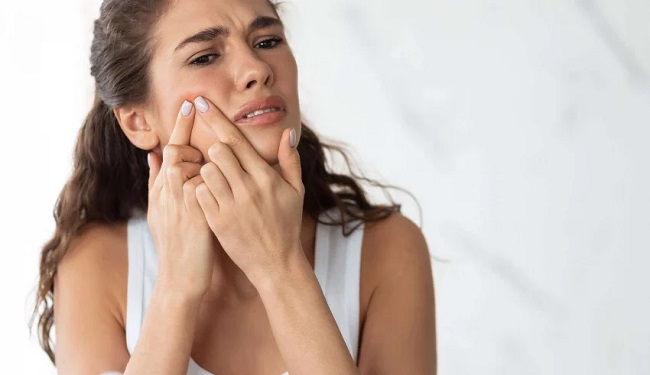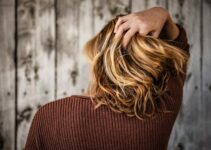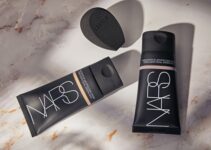Fungal acne is a type of infection in your hair follicles. It is taking the form of a simple pimple that can appear on your skin in different shape or size. It often comes along with itching and irritation. It can cause whiteheads too. That’s why it is often confused with Vulgaris. This type of acme is mostly associated with blackheads or whiteheads.
However, these two things are very different from each other. They are caused by different conditions too and have different treatments. So you need to understand which one you are dealing with before you start any kind of treatment. The wrong treatment can make fungal acne worse. If you are worried then no need because we will clear all your doubts in this article.

We will tell you how to Identity fungal acne and what can be done to get rid of it. You should read on to understand the Symptoms and signs of fungal acne and what you can do to treat it.
Read Also:
- Top 10 Gluten Free Snacks
- How Long Does Alcohol Stay In Your System
- 8 Home Remedies to Get Rid of Dandruff Naturally
What are The Causes of Fungal Acne?
Fungal acne is not like normal acne it isn’t primarily caused by oil and bacteria that is usually present in the pores of our skin. However, it must also be noted that oil and sebum plays an important role and helps in feeding the bacteria that causes the fungal acne in the first place.
The main cause behind the formation of fungal acne is an overgrowth of yeast which is a kind of fungus. It causes pimple like bumps on your skin which causes irritation. The other name of fungal acne is Pityroporum folliculitis and Malassezia folliculitis. The yeast that causes acne is generally present on human skin but it is present in a balanced amount.
But if the natural balance is upset then it can lead to overgrowth of yeast which ultimately leads to the person experiencing Fungal acne.
Several conditions can upset the natural balance of bacteria and fungus on your skin. We have listed some of them below–
1. Trapped moisture
If you are wearing sweat-drenched clothes for a long period of time then the damp environment can cause a growth in the fungus called yeast. Rewearing sweaty clothes without washing them can also lead to the growth of fungus that has already developed in their clothes.
2. Medication
If you are taking antibiotics then the bacteria on your skin can get reduced and you might experience an overgrowth of fungi. This is exactly how the balance of the skin works.
3. Suppressed Immune System
People with the compromised and suppressed immune systems may be more likely to develop fungal acne.
4. Diet Changes
Carbohydrates are the main thing that fungi feasts on. Eating excess carbohydrates can also cause yeast growth.
5. Wearing Tight Clothes
If you wear tight non-breathable clothes every single day then you are going to sweat a lot. Extra sweat and moisture can create a damp environment that can lead to overgrowth of yeast.
6. Warm, Moist Environment
People living in hot climates, sweat a lot. It can cause people to experience fungal acne more frequently.
What are the Symptoms of Fungal Acne?
People with fungal acne mistake it for acne vulgaris. This leads to wrong treatment and the fungal acne gets worse. Here is how you can tell the difference and properly identify the acne that you are facing–
1. Size- The bumps created by fungal acne are all nearly the same size but bacterial acne can cause pimples and whiteheads of varying size.
2. Location- Bacterial acne is most common on the face but fungal acne can appear on the face, arms, chest and back.
3. Itching- Fungal acne causes itching but bacterial acne does not.
4. Clusters- Fungal acne always appear in clusters but bacterial acne is not said to appear in clusters.
Fungal acne can cause other yeast related problem like psoriasis and dandruff.
How is Fungal Acne Diagnosed?
If you think you have fungal acne after reading this symptoms then you need to go see a dermatologist. They are specialised in diagnosing and treating conditions that affect the skin. The dermatologist can ask you some questions about what you are experiencing like how long you have had the breakout, what you have used to treat it and what symptoms you have come across.
They can also do a painless skin scraping and examine that skin under the microscope to look for any yeast which causes the fungal acne or they can alsi do a biopsy by taking a skin sample. The sample will be tested to check if you have fungal acne.
How is Fungal Acne Treated?
Like we have said before fungal acne is often mistaken for regular acne. Therefore often wrong treatment is administered to it. The everyday acne prevention stuff does not work against fungal acne and that’s awful. To properly treat fungal acne you need to restore the balance between yeast and bacteria on your skin.
Sounds a little gross we know but it’s only natural. There are several treatment options that you can try out once you have confirmed that its fungal acne.
1. Shower More Regularly
If you sweat a lot or maybe work out regularly then try to take a shower every day and preferably right after work. This will wash away your excess yeast. Yeast can usually start growing in the warm moist environment that develops in sweaty clothes.
2. Wear Looser Clothes
Friction and low airflow can also cause yeast growth on the skin so if you are in the habit of wearing tight clothes every day, get rid of it. Loose fabrics can help your skin get proper circulation and help in the balance of the bacteria and yeast growth on the skin.
3. Try a Body Wash
There is an off label use of dandruff shampoo that can prove very effective. You can use any dandruff shampoo that is made with selenium or pyrithione zinc as a body wash. You can use it to rinse your skin several times a week.
This proves most useful when you are having a breakout. You can also use it once a week, every week to maintain a healthy balance of yeast and bacteria on your skin.
Tip- allow the shampoo to sit on your skin for a while before rinsing it off to have the best results.
4. Use over-the-counter (OTC) AntiFungal Treatments
There are a lot of over the counter antifungal treatments available. You need to look for products with butenafine, ketoconazole or clotrimazole cream. You can just ask a person for help or you can do it yourself. Looking at the back of the pack and reading the ingredients used is a pretty easy task that anyone can do. And you even have the names, so we do not think you will face any problem.
5. Try Prescription Oral AntiFungal Medicine
If home treatments are not useful then you need to go see a dermatologist. Your dermatologist can prescribe oral medication. It can be something like itraconazole or fluconazole. You do not need to worry about the names. It targets the hair pores and eliminates the infection.
How Can I Prevent Fungal Acne?
Fungal acne can not be completely prevented but there are some things that you can di to reduce the chances of getting fungal acne.
1. Use a Dandruff Shampoo Regularly
This can help you maintain a good balance of yeast and bacteria on your skin. Once your break out is gone you can stop using the shampoo as a body wash so frequently and just use it maybe once a week. Having a regular practice helps.
2. Wear Breathable Fabric
Fungus grows the best in a warm and moist environment so in order to prevent that you need to wear loose breathable clothes so that there is good airflow. If you find out that changing your clothes has helped with the fungal acne infection then you should consider wearing the same kinds of clothes from now on.
3. Shower After Sweating
After working out or after returning from work, try taking a full shower every day. This helps prevent growth of yeast on your skin by washing off the excess.
4. Eat a Balanced Diet
If you are eating sugary carbohydrates more then it can also be food for your fungi like yeast. So try to balance your diet with fruits, vegetables, and proteins. This will help in preventing the over growth of yeast on your skin.
When should I See a Doctor?
If you have tried to treat your fungal acne at home and applied all kinds of methods, but it still did not go down or if it still persists after 3 weeks then you need to go and make an appointment with a dermatologist. A prescription medical antifungal medication can prove to be more effective.
If the symptoms return after the medication resolved your breakout then you need to make another appointment with a dermatologist. There are also treatments that can prevent fungal acne from coming back. It can also prevent possible long term issues. Discuss this with your doctor.
Read Also:
- Best Clarifying Shampoos for All Types of Hair
- 11 Best Tinted Moisturizers for Flawless Skin
- Everything You Need To Know About Black Heads
Conclusion
We hope that you liked this article. Now you know how to identify fungal acne and also the ways of preventing it. Try to see a dermatologist as soon as possible if you have not received any positive signs after using the homemade remedies. Recommend this article to others who are facing the same problem. Thank you very much for reading this article. Have a nice day.


